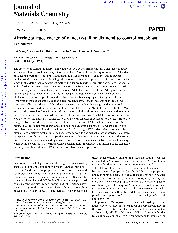摘要
The use of wear-resistant nanocrystalline diamond (NCD) for orthopedic and other medical device applications has received increasing interest as of late. This has led to the exploration of NCD surface modification methods to both resist and promote tissue-forming cell functions, and to further mechanistically understand such biological responses. This study represents one in a series of studies aimed to elucidate a facile and efficient method to alter NCD surface chemistry and surface free energy, and to further understand the correlation between osteoblast functions and these surface properties. Here, direct plasma treatment was used to modify NCD films with H(2), O(2) and NH(3) gases. Surface functionalization of NCD films after the various plasma treatments were determined by X-ray photoelectron spectroscopy (XPS) and the NCD surface free energy generated by such chemical terminations were calculated by contact angle measurements. Results indicated that the plasma treatments effectively altered NCD surface chemistry and surface free energy, and a monotonic correlation between surface free energy and the hydrophilicity of the NCD films was established. Most importantly, osteoblast (bone forming cell) responses (including short-term attachment and long-term differentiation from non-calcium depositing to calcium depositing cells) on NCD of various surface free energies were evaluated, and a strong correlation between all osteoblast responses and the surface free energy of NCD was discovered for the first time. In particular, NCD which was treated with NH(3) plasma had the highest free energy and exhibited the best osteoblast responses, whereas the worst osteoblast responses was found on the lowest surface free energy NCD surface which was treated by H(2) plasma. A competitive mechanism of cell aggregate cohesivity and cell-substrate adhesivity is discussed to explain the surface free energy-dependent osteoblast functions on NCD. The results of this study provide an important understanding of osteoblast functions as mediated by NCD surface free energy which could be controlled by various chemical terminations. Eventually, this understanding can guide the design and fabrication of NCD for numerous biomedical applications.
- 出版日期2012
